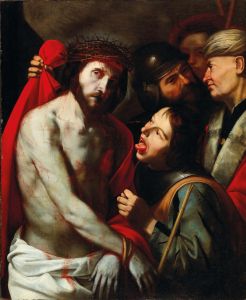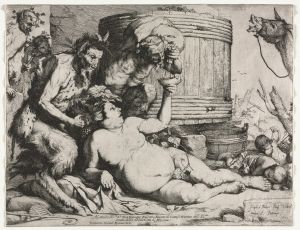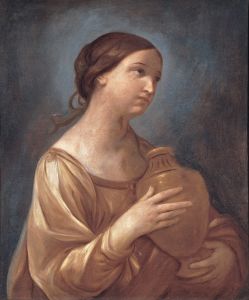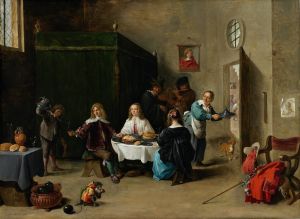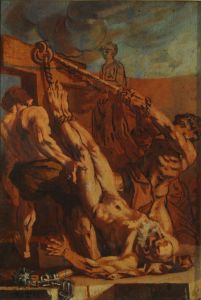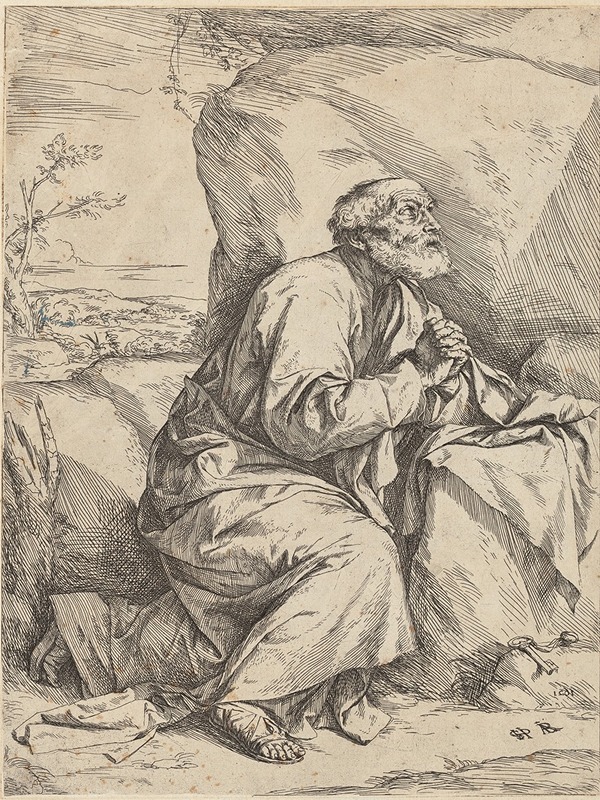
Penitence of Saint Peter
A hand-painted replica of Jusepe de Ribera’s masterpiece Penitence of Saint Peter, meticulously crafted by professional artists to capture the true essence of the original. Each piece is created with museum-quality canvas and rare mineral pigments, carefully painted by experienced artists with delicate brushstrokes and rich, layered colors to perfectly recreate the texture of the original artwork. Unlike machine-printed reproductions, this hand-painted version brings the painting to life, infused with the artist’s emotions and skill in every stroke. Whether for personal collection or home decoration, it instantly elevates the artistic atmosphere of any space.
Jusepe de Ribera, a prominent Spanish painter of the Baroque period, created "Penitence of Saint Peter" in the early 17th century. Ribera, who spent much of his career in Italy, particularly in Naples, was known for his dramatic use of chiaroscuro and his ability to convey intense emotion through his works. This painting is a testament to his skill in portraying religious themes with a profound sense of realism and emotional depth.
"Penitence of Saint Peter" depicts a poignant moment in the life of Saint Peter, one of Jesus Christ's closest disciples. The painting captures the moment of Peter's repentance after he denied knowing Jesus three times before the crucifixion, as foretold by Christ. This theme of repentance and forgiveness is central to Christian teachings and has been a popular subject in religious art.
In Ribera's depiction, Saint Peter is shown in a moment of deep reflection and remorse. The artist's use of chiaroscuro—contrasting light and shadow—highlights Peter's expressive face and hands, drawing the viewer's attention to his emotional state. The light source, seemingly divine, illuminates Peter's face, symbolizing the hope of redemption and forgiveness. Ribera's mastery in rendering textures is evident in the detailed depiction of Peter's weathered skin and the coarse fabric of his clothing, adding to the realism of the scene.
The composition is relatively simple, focusing almost entirely on the figure of Saint Peter. This simplicity serves to emphasize the emotional gravity of the moment, allowing viewers to connect with Peter's inner turmoil. Ribera's ability to convey complex emotions through subtle facial expressions and body language is a hallmark of his work, and "Penitence of Saint Peter" is no exception.
Ribera's choice of subject matter reflects the Counter-Reformation's emphasis on personal piety and repentance. During this period, the Catholic Church encouraged artists to create works that would inspire devotion and convey religious messages clearly and powerfully. Ribera, influenced by the naturalism of Caravaggio and the dramatic intensity of the Baroque style, was well-suited to meet these demands.
The painting is housed in the Museo del Prado in Madrid, which holds an extensive collection of Ribera's works. The museum's collection provides insight into Ribera's development as an artist and his contributions to the Baroque movement. "Penitence of Saint Peter" is considered one of Ribera's masterpieces, showcasing his technical skill and his ability to convey profound spiritual themes.
Ribera's work has been studied for its technical brilliance and its ability to evoke deep emotional responses. "Penitence of Saint Peter" continues to be appreciated not only for its artistic merit but also for its powerful depiction of a universal theme—the human capacity for remorse and the hope for redemption. Through this painting, Ribera invites viewers to reflect on their own experiences of repentance and forgiveness, making it a timeless piece that resonates with audiences across generations.







